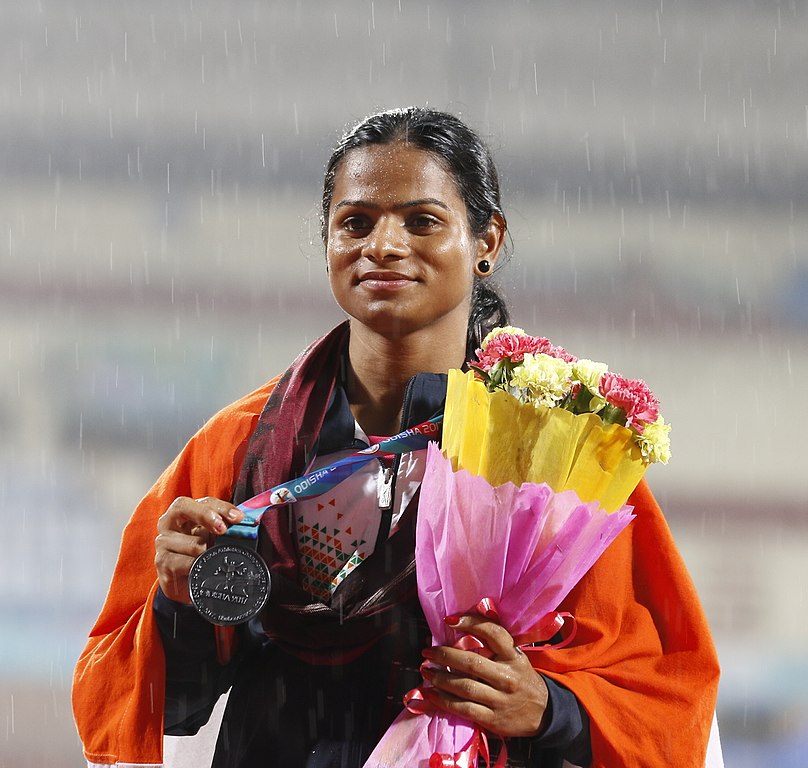Dutee Chand is a woman who competes for India in track and field events. Dutee Chand has elevated levels of testosterone in her body … this creates a problem for those who determine who is allowed to compete as a woman in international sporting events:

Dutee Chand won the bronze medal in 22nd Asian Athletics Championships in Bhubaneswar, 8 July 2017. (via Wikimedia)
For the past two years, Dutee Chand could be herself.
She could run and train and even compete in the Rio Olympics. She didn’t have to constantly remind people that, yes, of course, she is a woman and that, yes, of course, she qualifies to compete with other women despite her naturally high level of testosterone.
She didn’t have to feel pressure to change her body so it conformed to rules or contemplate quitting her sport — pressure placed on her after doctors subjected her to gender testing in 2013, humiliating her by doing so, when she was only 17.
For two years, she could just be Dutee Chand. That’s because, two years ago last month, the Court of Arbitration for Sport, which is the supreme court for global sports, temporarily suspended an international track and field rule that had barred her from competing as a woman.
Chand, a sprinter from India, and women like her were excluded because their bodies produced a high amount of testosterone. It was often so high it was classified as being within the male range, a situation the authorities considered an unfair advantage. The only way these women could compete, track and field officials ruled, was if they took hormone-suppressing drugs or had surgery to limit the amount of testosterone their bodies produced.
The problem for international sporting bodies is that they’re still stuck in the binary — only two genders — model of competition, which leaves them unable to cope with situations like this. They can either prevent athletes like Dutee Chand from competing against other women or accept that the old standards no longer apply. Pushed to the limit, this means there can no longer be any kind of binary division of sporting activities into the old “male” and “female” categories … which will, in all likelihood, be devastating to women hoping to compete internationally, nationally, or even regionally. There’s no easy answer, and any Solomonic decision is going to make the situation worse, not better.
At its core, the sports world — rigidly separating men and women — will perpetually struggle to adapt to increasingly nuanced gender distinctions. In June, the District of Columbia became the first jurisdiction in the United States to offer an “X” gender, signifying a neutral gender, on its driver’s licenses. In March, a transgender New Zealand woman crushed her competition in her first international weight-lifting meet, and a transgender boy won a Texas state championship in girls’ wrestling.
Not every governing body is equipped to rule on these kind of eligibility questions. Not every athlete fits into this box, or that one.
To Chand, though, the issue of hyperandrogenism in sports is clear cut. She grew up as a girl. At 21, she is a proud young woman. She wants to race as one.
On Saturday, she did. But in the coming months, the Court of Arbitration for Sport will decide whether letting her continue to do so is fair.
What if it gets it wrong?



